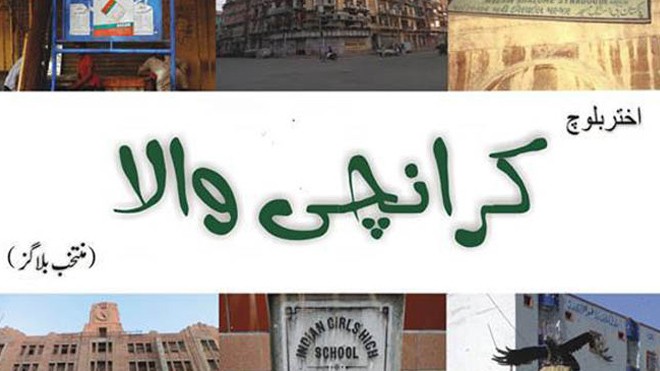
By compiling his blogs together, Akhtar Balouch ferrets out the forgotten benefactors of Karachi

Akhtar Balouch is a journalist, human rights activist and an author of three books. Apart from this, he is well entrenched in the cultural, social and political history of Sindh and his writings bear testimony to his commitment to telling history in an impartial way. A few years ago, Balouch started writing blogs about Karachi for an English daily, in these he busted many myths about the history of Karachi. His blogs were avidly read and discussed and this prodded Balouch to further explore the city’s historical buildings that are remnants of its cosmopolitan culture.
By compiling these blogs together in a book under the title of Karanchi Wala, Balouch provides relief for those tired of reading insipid official history. The book ferrets out the forgotten benefactors of Karachi who heavily contributed to its development in days gone by. This book is also about the selfless heroes of this city that we have erased from our collective memory.
We hear tall claims of Karachi turning, once again, into the ‘city of lights’ by every government. But does anyone know who first created the ‘city of lights’? He was none other than Seth Harchandrai Vishandas who served as the president of Karachi municipality from 1911 to 1921. He set up an electricity company in Karachi during his tenure. Vishandas was an indefatigable and selfless servant of the people of Karachi and he worked wonders in many fields. He introduced paved roads in Karachi for the first time and supported many philanthropic endeavours. When Karachi fell prey to a plague in 1896-97, Vishandas was city councillor. He set up makeshift medical facilities for patients and helped them financially and by providing security.
In 1934, a statue was erected to pay in honour of his services for the city. After 1947, the statue was removed from the city council. A road was named after him, but later renamed and hence all traces of that great man of Sindh were done away with. The author writes that the statue is now situated in the back garden of Mohatta Palace, but someone has chopped off Vishandas’ head.
Eduljee Dinshaw and his son Nadirshaw Eduljee Dinshaw, the father-son Parsee philanthropist duo, have also been remembered by Balouch. It was this family that set up hospitals, educational institutions, and residential colonies for Karachi’s citizens. The famous NED University is another huge contribution on their behalf -- not many know that NED stands for Nadirshaw Eduljee Dinshaw. Then, people of the city had erected statues of the father, as well as his illustrious son, but these statues are nowhere to be seen now. Balouch found both statues in Karachi Parsi Institute, luckily still intact.
Faizi Rahimin and Atiya Faizi, Karachi’s famous artist couple, didn’t receive the amount of love from Karachi that they gave to the city. In a moving piece, the author narrates how they were thrown out of their house at the behest of a bureaucrat, N M Khan. The couple was invited by Jinnah himself to settle in Karachi. They left Bombay and came here and died in abject poverty due to the official apathy and highhandedness.
There are nearly 40 short pieces on various buildings, places and personalities of Karachi and hence it’s impossible to discuss them all here. If you are curious about Karachi’s past, you must immediately grab the book. Who built Mohatta Palace and why? Who was Abdul Majeed Sindhi and what was his stature in the politics of Sindh? Where is Guru Mandir actually located and what happened to Karachi’s Jews? Balouch roamed the lanes of Karachi and caught on camera all the ways in which we have consciously vandalised our cultural heritage.
But the big question remains: For how long we will continue to vandalise our common cultural heritage? Will we learn something from history or continue to feel threatened by statues from the past?